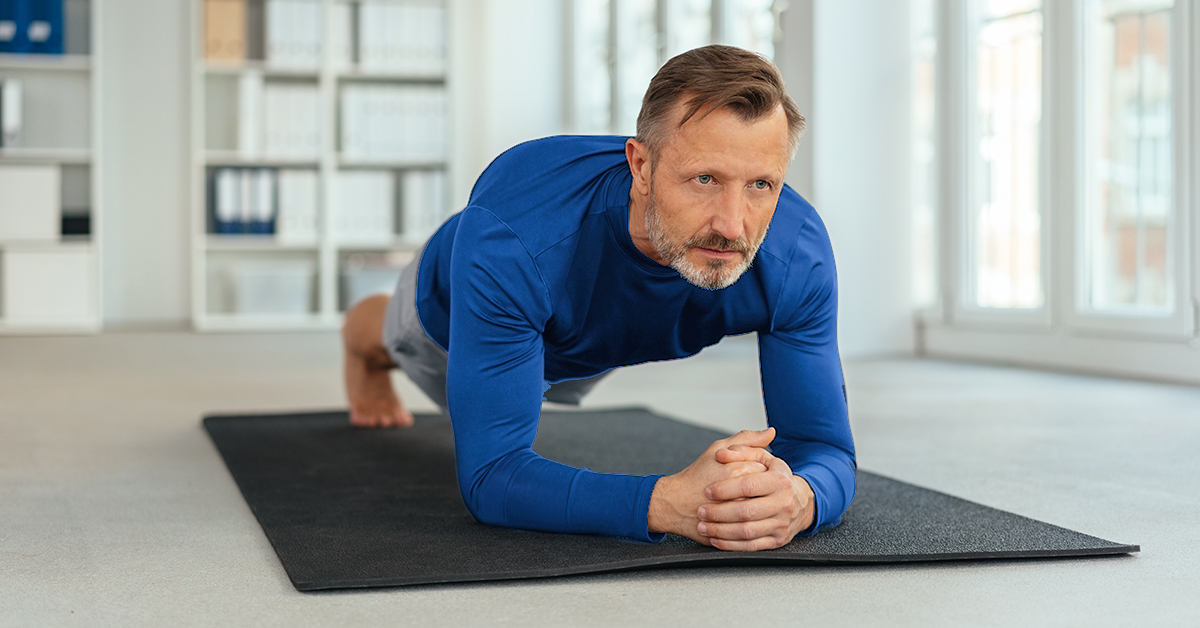Blog & Resources
When it comes to working your core, planks are one of the most effective exercises out there. They’re simple to do and don’t require any equipment, making them perfect for at-home workouts. Plus, they can be modified to suit your fitness level, whether you’re a beginner or a pro.
What are planks and what are their benefits?
Planks are an isometric exercise, meaning your muscles contract but don’t move. This makes them incredibly effective at toning your entire body, especially your core muscles.
Planking is a great way to improve your posture and relieve pain in the lower back and neck. It also strengthens the abdominals, obliques, shoulders, chest, and legs.
When done regularly, planking can help to improve your balance and stability. It’s also a great way to build up your endurance and stamina.
How to do a plank correctly
There are a few different types of planks, but the most common is the forearm plank.
To do a forearm plank, start by lying on your stomach with your legs extended behind you. Place your forearms on the ground, shoulder-width apart, and tuck your toes under.
Raise yourself up onto your forearms and toes so that your body forms a straight line from head to heels. Engage your core muscles and hold this position for 30-60 seconds.
If you’re a beginner, start by holding the plank for 20-30 seconds and gradually work your way up to longer durations.
Once you’ve mastered the forearm plank, you can try other variations, such as the full plank (placing your palms on the ground) or side plank (resting on one forearm and stacking your feet on top of each other).
Tips for a more effective plank
WIDEN YOUR BASE. The wider your base, the easier it is to balance: take feet wide apart, instead of having them together. Hands should also be shoulder-width apart or wider: wherever’s comfortable. SPREAD your fingers: a wider base through the hands and weight in the palm will help too.
2. SQUEEZE EVERYTHING. Flex your quads, tighten your core and squeeze your butt. Keeping everything stiff and tightened, will work your whole body AND help you stabilize.
3. DON’T LOOK AT YOUR FEET. Keep your eyes forward, and let them fall in front of your fingertips. When you look towards the toes, it throws off your center. Try to look at a spot about 2-3 feet in front of you.
4. STRAIGHTEN YOUR BODY LIKE A LINE FROM THE TOP. Think straight body line from the top part of you (not the underside). Hips should be lifted, and in line with your shoulders: like a table top. For those with back issues, this will take the pressure off considerably. Many people do their planks thinking a straight line from the underside, NOT the top, which can put too much pressure on your low back.
5. HEELS FLEXED. Flex THROUGH the feet, with heels pushing towards the back of the room (toes fall in slightly in front of them). This helps engage the lower body and helps with stability, and a good stretch too.
6. PRETEND THE FLOOR IS TRYING TO CRUSH YOU. Imagine you’re lying on your back and the floor is actually trying to smush you. Think about keeping it away from you, instead of holding yourself up. The arms are straight but not overly locked.
7. BREATHE. Focus on your breathing, nice deep big breaths.
8. ENGAGE THE CORE. Pull your belly button in towards your back. You don’t want the hips to sag down. If your lower back hurts in plank, 99% of the time it’s because the core isn’t engaged properly.
Finding your max plank
Don’t watch the time. Instead, wait until it starts to get hard. Then VERY hard. Then count slowly to 10-20 before releasing. Many people can hold plank for MUCH longer than they think they can, but if you only try to reach 30 seconds, you may never know that you can actually do 45 or 60. Distract yourself, breathe and focus.
Planking variations for different fitness levels
If you’re a beginner, start with modified planks on your knees instead of your toes. You can also try side planks, which are easier on the wrists than full planks.
As you get stronger, you can move on to more challenging variations, such as plank jacks (jumping your feet out to the sides while in the plank position) or moving planks (walking your hands forward and backward while in the plank position).
You can also add in arm and leg raises to work different muscle groups. For example, try doing a push-up while in the plank position, or raise one leg at a time while keeping your hips level.
No matter what variation you choose, make sure you keep your core engaged and your back straight. And remember to breathe!
So what are you waiting for? Get out there and start planking!
